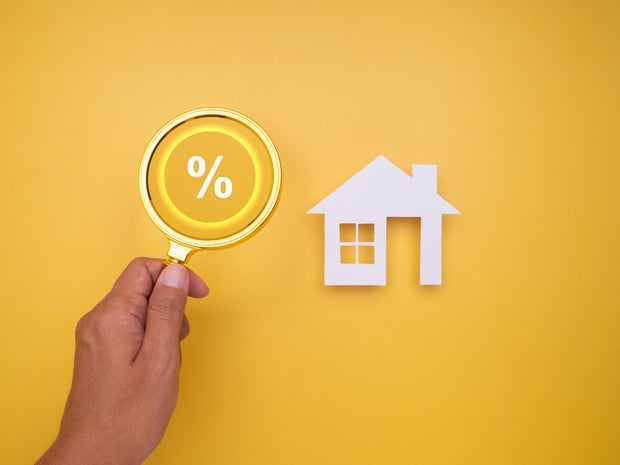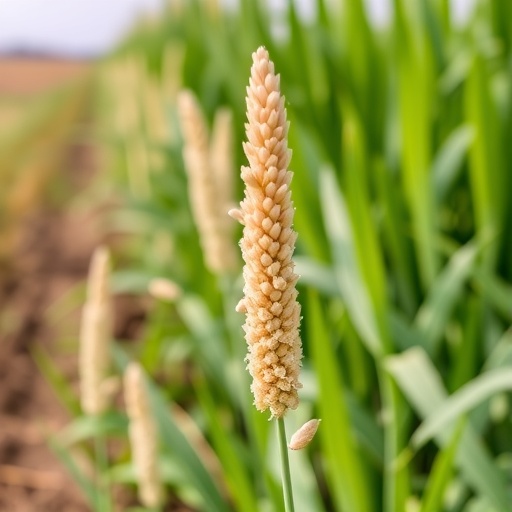Ripple Aims to Disrupt $685 Billion Remittance Market with RLUSD Stablecoin – AInvest

Ripple’s RLUSD Stablecoin: A Report on Its Impact on Global Remittances and Sustainable Development Goals
Executive Summary
Ripple Labs has introduced RLUSD, a digital stablecoin pegged 1:1 to the U.S. dollar, with the objective of transforming the global cross-border payments industry. This initiative directly addresses long-standing inefficiencies within the $685 billion remittance market. By leveraging blockchain technology, RLUSD aims to provide faster, more affordable, and transparent payment solutions. This report analyzes the operational framework of RLUSD and its significant alignment with several United Nations Sustainable Development Goals (SDGs), particularly those concerning poverty reduction, economic growth, innovation, and reduced inequalities.
Addressing Remittance Inefficiencies in Alignment with SDG 10
The traditional remittance system is characterized by high costs, slow processing times, and a lack of transparency, disproportionately affecting individuals in developing nations. These challenges are a direct barrier to achieving SDG 10 (Reduced Inequalities), which includes Target 10.c: to reduce to less than 3% the transaction costs of migrant remittances by 2030. RLUSD offers a direct response to these issues.
- Cost Reduction: Traditional transfers can incur fees as high as 6.4%, excluding foreign exchange costs. RLUSD minimizes the need for intermediaries, thereby substantially lowering transaction fees and ensuring more capital reaches the intended recipients.
- Increased Speed and Transparency: Unlike conventional bank transfers that can take several days, RLUSD transactions are settled rapidly. All payments are trackable on the blockchain, providing full transparency for both sender and receiver.
- Financial Accessibility: RLUSD provides a vital financial tool in regions with limited or non-existent traditional banking services, promoting greater financial inclusion.
Fostering Innovation and Economic Growth (SDG 9 & SDG 8)
Ripple’s strategy represents a significant technological advancement in financial infrastructure, directly contributing to SDG 9 (Industry, Innovation, and Infrastructure). By creating a more resilient and inclusive financial system, RLUSD supports global economic activity and decent work.
- Innovative Infrastructure: RLUSD operates on a decentralized ledger, revolutionizing payment rails to allow for direct, peer-to-peer value transfer across borders.
- Support for Global Workforce: The platform facilitates efficient and low-cost payments to workers in different countries, supporting global labor markets and contributing to SDG 8 (Decent Work and Economic Growth).
- Humanitarian and Non-Profit Aid: Ripple has committed $25 million to assist non-profits in utilizing RLUSD for rapid and transparent aid distribution, such as disaster relief and funding for global projects. This directly supports SDG 1 (No Poverty) by ensuring aid is delivered efficiently.
Strengthening Institutions and Partnerships for the Goals (SDG 16 & SDG 17)
The long-term viability and trust in RLUSD are being established through strategic regulatory compliance and institutional partnerships, which are fundamental tenets of SDG 16 (Peace, Justice, and Strong Institutions) and SDG 17 (Partnerships for the Goals).
Key Developments in Governance and Collaboration:
- Regulatory Approval: RLUSD has received approval from the Dubai Financial Services Authority (DFSA) for use within the Dubai International Financial Centre (DIFC), a major global financial hub.
- U.S. Legislative Framework: The proposed GENIUS Act in the United States aims to create a clear regulatory environment for stablecoins, which would enhance the security and scalability of RLUSD.
- Institutional Custody: A partnership with BNY Mellon to serve as the primary custodian for RLUSD reserves underscores a commitment to stability and security, building trust among institutional users.
- Federal Charter Application: Ripple’s application for a national bank license in the U.S. signifies a move towards greater regulatory integration and credibility within the established financial system.
Conclusion and Future Outlook
Ripple’s entry into the stablecoin market with RLUSD is a strategic initiative poised to disrupt the global remittance industry. By offering a solution that is cheaper, faster, and more transparent than traditional systems, Ripple is not only positioning itself as a key player in the future of finance but also making substantial contributions to achieving the Sustainable Development Goals. The projected growth of the stablecoin market to over $1 trillion highlights the potential for widespread impact. The success of RLUSD will depend on navigating complex regulatory landscapes and achieving broad adoption, but its foundational design is intrinsically linked to fostering a more equitable and efficient global economy.
Analysis of Sustainable Development Goals (SDGs) in the Article
1. Which SDGs are addressed or connected to the issues highlighted in the article?
-
SDG 1: No Poverty
- The article discusses using RLUSD for sending aid during disasters and supporting global projects through a $25 million allocation to nonprofits. This directly relates to alleviating poverty and providing financial support to vulnerable populations.
- By providing access to financial services in areas where traditional banking is limited, RLUSD can empower individuals economically, contributing to poverty reduction.
-
SDG 9: Industry, Innovation and Infrastructure
- The core of the article is about Ripple’s use of blockchain technology (RLUSD) to create a new, more efficient financial infrastructure for cross-border payments. This is a clear example of technological innovation being applied to the financial industry.
- The article highlights how RLUSD aims to “revolutionize payments” by making them “faster, cheaper, and more transparent,” which aligns with developing reliable and sustainable infrastructure to support economic development.
-
SDG 10: Reduced Inequalities
- The primary focus on reducing the high cost of remittances directly addresses inequality. The article states that traditional transfers can charge up to 6.4% in fees, disproportionately affecting migrants and their families who rely on these funds.
- By offering a cheaper alternative, RLUSD helps to reduce the financial burden on individuals sending money across borders, ensuring more of the remitted money reaches the recipient.
-
SDG 17: Partnerships for the Goals
- The article mentions multiple partnerships crucial for the success and adoption of RLUSD. This includes collaborations with financial institutions like BNY Mellon, regulatory bodies like the Dubai Financial Services Authority (DFSA), and civil society through a $25 million fund for nonprofits.
- Ripple’s engagement with U.S. lawmakers on the GENIUS Act also represents a public-private partnership aimed at creating a stable regulatory environment for digital assets.
2. What specific targets under those SDGs can be identified based on the article’s content?
-
Target 10.c: By 2030, reduce to less than 3 per cent the transaction costs of migrant remittances and eliminate remittance corridors with costs higher than 5 per cent.
- The article directly addresses this target by highlighting that traditional remittance fees can be as high as “6.4% in fees, plus foreign exchange costs.” Ripple’s RLUSD is presented as a solution to “cut costs” and offer a “cheaper” option, aiming to disrupt the “$685 billion remittance industry” by lowering these transaction costs.
-
Target 9.1: Develop quality, reliable, sustainable and resilient infrastructure, including regional and transborder infrastructure, to support economic development and human well-being, with a focus on affordable and equitable access for all.
- Ripple’s RLUSD is described as a new form of global payment infrastructure built on blockchain technology. The article emphasizes its qualities of being “faster, cheaper, and more transparent,” and its goal is to provide more equitable access to financial services, especially “in areas where traditional banking services are limited or unavailable.”
-
Target 1.4: By 2030, ensure that all men and women, in particular the poor and the vulnerable, have equal rights to economic resources, as well as access to basic services… appropriate new technology and financial services…
- The article explains that RLUSD provides a way to send and receive money directly “without the need for banks or intermediaries.” This is particularly beneficial for people in regions “where traditional banking services are limited or unavailable,” thereby increasing access to financial services for the poor and vulnerable.
-
Target 17.17: Encourage and promote effective public, public-private and civil society partnerships, building on the experience and resourcing strategies of partnerships.
- The article provides several examples of such partnerships. This includes a public-private partnership with the Dubai Financial Services Authority (DFSA), a private-sector partnership with BNY Mellon, and a civil society partnership through the “$25 million to help nonprofits use the stablecoin.”
3. Are there any indicators mentioned or implied in the article that can be used to measure progress towards the identified targets?
-
Indicator 10.c.1: Remittance costs as a proportion of the amount remitted.
- The article provides a baseline figure for this indicator by stating that “Traditional transfers can charge up to 6.4% in fees.” The success of RLUSD in meeting Target 10.c can be measured by tracking the reduction in this percentage for transactions using the stablecoin.
-
Implied Indicator for Target 9.1: Volume and value of transactions on the new infrastructure.
- Progress can be measured by the adoption and use of RLUSD. The article mentions the size of the current market (“$685 billion in remittances”) and the potential future market size (“$1 to $2 trillion”). Tracking the market share and transaction volume of RLUSD within this market would serve as an indicator of its success as a new infrastructure.
-
Implied Indicator for Target 1.4: Number of users in unbanked/underbanked regions.
- While not explicitly stated, a key indicator for measuring progress would be the number of people who adopt RLUSD “in areas where traditional banking services are limited or unavailable.” Growth in this user base would demonstrate increased access to financial services for vulnerable populations.
-
Implied Indicator for Target 17.17: Number and value of multi-stakeholder partnerships.
- The article provides concrete examples that can be used as indicators: the partnership with the DFSA, the collaboration with BNY Mellon, and the “$25 million” fund allocated to nonprofits. The number of new partnerships with financial institutions, governments, and NGOs would measure progress toward this target.
4. Summary of Findings
| SDGs | Targets | Indicators |
|---|---|---|
| SDG 10: Reduced Inequalities | 10.c: Reduce to less than 3% the transaction costs of migrant remittances. | 10.c.1: Remittance costs as a proportion of the amount remitted (the article cites a baseline of 6.4% for traditional methods). |
| SDG 9: Industry, Innovation and Infrastructure | 9.1: Develop quality, reliable, sustainable and resilient infrastructure… with a focus on affordable and equitable access for all. | Implied: Volume and value of transactions on the RLUSD platform, measured against the $685 billion remittance market. |
| SDG 1: No Poverty | 1.4: Ensure equal rights to economic resources, as well as access to… appropriate new technology and financial services. | Implied: Number of users adopting RLUSD in areas where traditional banking is limited or unavailable. |
| SDG 17: Partnerships for the Goals | 17.17: Encourage and promote effective public, public-private and civil society partnerships. | Implied: Number and value of partnerships, such as the collaboration with DFSA, BNY Mellon, and the $25 million fund for nonprofits. |
Source: ainvest.com

What is Your Reaction?
 Like
0
Like
0
 Dislike
0
Dislike
0
 Love
0
Love
0
 Funny
0
Funny
0
 Angry
0
Angry
0
 Sad
0
Sad
0
 Wow
0
Wow
0


















-1920w.png?#)


















;Resize=805#)







































